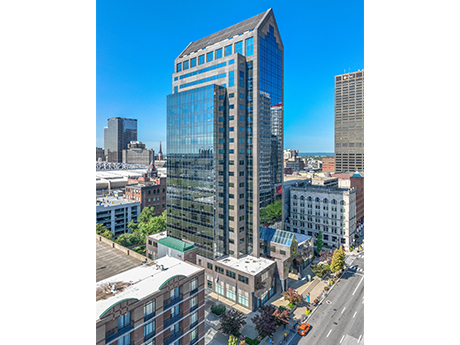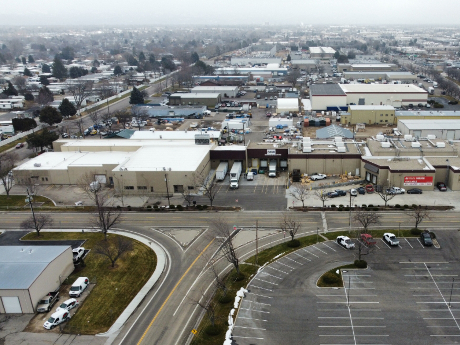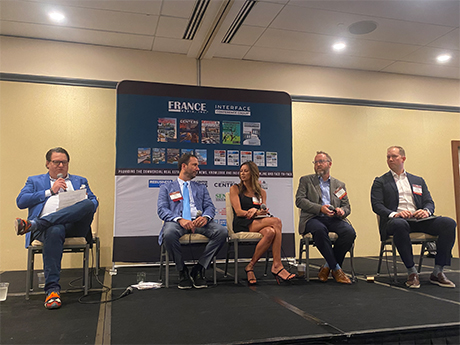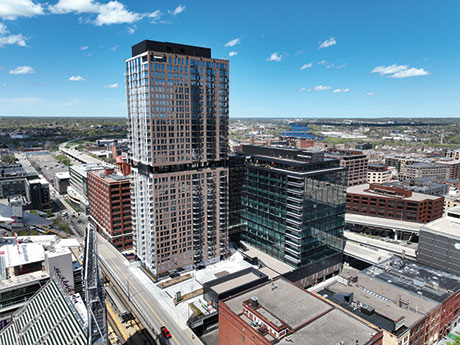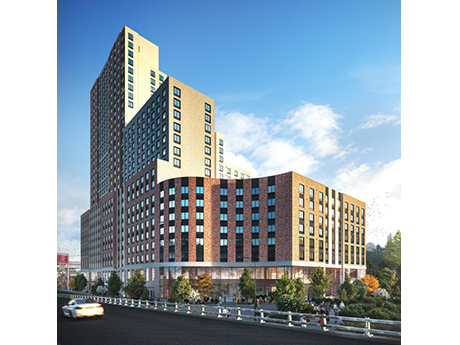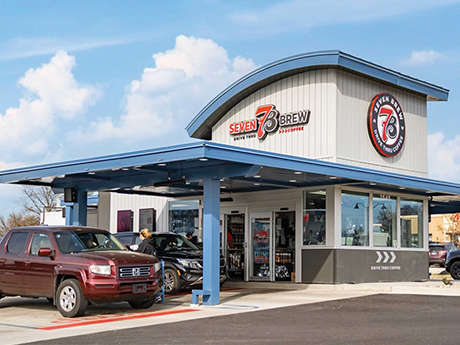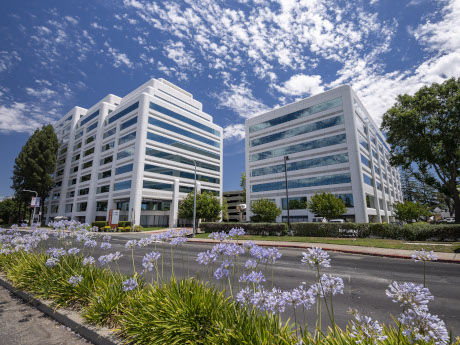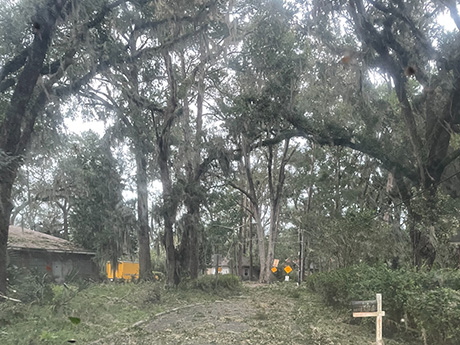The Louisville office market is at an interesting crossroads, to say the least. Historically, the sector has always skewed toward the suburban submarkets as east Jefferson County has been the go-to area for companies looking for office space. Over the past few years, the shift to the suburbs has become more pronounced than ever as Louisville’s office market experiences a dramatic contrast between the current state of the overall office market in the suburbs versus the central business district (CBD). In the suburban markets, the premier office buildings are experiencing low vacancy rates and record-setting growth in rental rates. On the opposite side, the CBD continues to struggle with increases in vacancy rates, which is expected to increase in the coming months. This trend reflects overall national office trends as companies focus on new, highly amenitized spaces to offer their employees. Suburban Louisville The suburban office market in Louisville has demonstrated reliable stability over the past four years. As of second-quarter 2024, the vacancy rate for Class A spaces stood at 12.7 percent, while Class B spaces recorded a higher rate of 17.2 percent. The suburban market has seen limited new construction deliveries thus far in 2024. The most notable …
Market Reports
— By Devin Pierce, industrial specialist, TOK Commercial in Boise — In recent years, Boise’s industrial market has become a focal point for investors and developers drawn to the region’s economic growth and location. With demand for industrial space on the rise, the market has experienced an unprecedented wave of new construction aimed at meeting the needs of both local businesses and national tenants looking to expand their operations. This surge in development activity reflects Boise’s growing prominence as a logistics and manufacturing hub. However, as new projects come online, the market is also grappling with the challenges of balancing supply and demand, particularly in the wake of fluctuating economic conditions. Speculative Construction Drives Vacancy Surge Boise’s industrial market saw a considerable number of projects completed during the first half of 2024, with more than 2.2 million square feet of new construction delivered. Speculative construction accounted for more than 86 percent of these projects, totaling nearly 2 million square feet and marking a record high for mid-year. Top spec projects included nearly 1 million square feet at Red River Logistics Center; three new buildings (totaling 292,000 square feet) at Park84 in Nampa; and 396,000 square feet at Sky Ranch Logistics. This …
By Taylor Williams In the eyes of some commercial brokers, especially those who represent tenants, there actually is such a thing as too little vacancy. When markets are running super-hot, meaning demand is far outstripping supply, tenants have minimal options and often end up paying premiums just to be able to secure space. That’s great for landlords — to a point — because markets can only bear so much rent growth in so much time before tenants start looking for workarounds to physical occupancy. Enter the Dallas-Fort Worth (DFW) industrial sector, which has been on fire for the past seven-plus years. Explosive volumes of new deliveries, frenetic paces of absorption, stiff competition for space, record levels of rent growth and a national coming-out party as an undeniable Tier 1 market have all been hallmarks of this activity. But such torrid paces of growth were never really sustainable in perpetuity, and although both the supply and demand sides of the market have cooled, the slowdown in some ways reflects a return to healthier dynamics. Editor’s note: InterFace Conference Group, a division of France Media Inc., produces networking and educational conferences for commercial real estate executives. To sign up for email announcements …
By Michael Gelfman, Colliers Like many major cities across the U.S., the Minneapolis-St. Paul office market remains soft while office users continue to adjust to the shifting dynamics of work brought on by the global pandemic. The gap between performing and non-performing buildings, driven by challenging debt markets, evaporation of building owners’ equity and the impact of hybrid work on office space demand, is growing. Building owners are faced with difficult and often expensive decisions: spend what’s needed to create a highly amenitized environment (necessary to compete) that attracts tenants and draws employees back to the office or face a race to the bottom. For tenants in the market, this perfect storm has created unprecedented opportunity. Hybrid work is here to stay For the last several years, many have wondered where the office market in Minneapolis-St. Paul was heading. The pandemic fundamentally changed the way companies use office space — was hybrid work a temporary solution to a once-in-a-lifetime event or was it here to stay? Today we know the answer: hybrid work is here to stay. As a result of this seismic shift, some of which is due in part to artificial intelligence, many tenants over the last few …
By Jason Penighetti, Esq., and Carol Rizzo, Esq. of Forchelli Deegan Terrana Together with high rent and exorbitant property values, the real property taxes that fund necessary services in New York State make housing affordability a significant concern for low- and middle-income residents. To ensure a sufficient supply of affordable housing, the state must address the ad valorem levy, whereby taxes are derived from a property’s market value. This article examines the critical interplay between New York’s property tax policies and housing affordability. While some taxing mechanisms hinder the development and availability of affordable housing, adjustments and a few additions to those practices have the potential to promote the affordable sector. Exemptions, Incentives New York’s real property tax system supports a complex framework of entities that rely significantly upon property tax levies to generate revenue and fund their budgets. Property taxes, assessed at the local level, support essential services such as public schools, police departments, libraries, highways, fire districts, open space preservation, out-of-county college tuition and the New York State Metropolitan Transportation Authority, among others. To encourage the development of affordable housing and ease the burden that real property taxes can impose on developers and owners in the sector, New …
Louisville’s economy remains resilient, and regional economic growth is creating a strong foundation for the retail market. Greater Louisville Inc. recently announced that 72 businesses are considering relocating or expanding to the region, with the potential of 8,200 new jobs and $3.8 billion in economic investment. Louisville is well-positioned for growth and the retail outlook remains strong with historically low vacancy rates. The market’s expanding consumer base and resilient economy have mostly overcome headwinds such as interest rate fluctuations, volatility in capital markets and signs of a slowing economy. This resilience has put Louisville in a strong position moving into the last quarter of 2024. At the end of the second quarter, Louisville’s vacancy rate stood at a strong 3.4 percent, outperforming the national benchmark of 4.1 percent, according to CoStar Group. The limited amount of new retail construction over the past 18 months has played a significant role in keeping the vacancy rate low. In fact, only roughly 322,000 square feet of retail space has been delivered over the past 12 months. Grocers are pushing leasing activity, making up 36 percent of the leasing volume that past 12 months. These retailers are executing most of the activity in spaces …
— By Colin Yasukochi, executive director, Tech Insights Center, CBRE — An increasing supply of distressed properties for sale has been met with enthusiasm by a growing number of opportunistic buyers in San Francisco. Prices up to 70 percent lower than the seller’s cost basis, combined with improving fundamentals, has given investors confidence to make property purchases ahead of substantial leasing market recovery. About $1 billion of office sales volume could be reached by year-end 2024. There are 27 properties totaling 3.6 million square feet that have sold (totaling $338 million), are under contract (totaling $193 million) or being marketed ($453 million). If this occurs, it would be the highest number of properties sold since 2019 and the highest square footage and dollar volume since 2021. The years 2022 and 2023 combined had a total sales volume of $945 million. Stabilization in the office leasing market has emerged with vacancy and rents little changed and much higher space demand. Second-quarter 2024 vacancy ticked up to 36.8 percent (+0.1 percent), while average asking rents ticked down to $68.43 (-$0.12) compared to the previous quarter. Demand indicators strengthened with leasing activity and tenants in the market rising in the second quarter of …
FloridaGeorgiaMarket ReportsNorth CarolinaSouth CarolinaSoutheastSoutheast Market ReportsStudent Housing
Universities, Student Housing Properties in Southeast Contend with Hurricane Helene
by John Nelson
Hurricane Helene made landfall in Northwestern Florida on Thursday, Sept. 26, after being upgraded to a major Category 3 storm that afternoon. Widespread damage across a number of Southeastern states followed in its wake, with many areas experiencing flooding, downed trees, power outages and road closures. At least 175 people have died across six states, according to reports by CNN and The New York Times, and officials fear that the death toll is likely to rise with many remaining missing. Hundreds of roads remain closed across the Southeast — especially in Western North Carolina and East Tennessee, which were hit particularly hard by the hurricane — hampering the delivery of supplies, and more than 2 million customers remain without power. Student Housing Business reached out to universities, owners, operators and students across the Southeast to check in on how they fared during the storm and their experience in the aftermath. Owners, Operators Weigh In Denver-based Cardinal Group tracked its communities in Alabama, Arkansas, Florida, Georgia, Kentucky, North Carolina, South Carolina, Tennessee, Virginia and West Virginia through Hurricane Helene. “Of those communities, four experienced power outages and several had minor roof leaks and flooding, with the largest impact felt in Asheville and Boone, North Carolina,” says Jenn Cassidy, president of property operations …
By Taylor Williams Earlier this year, data from the U.S. Census Bureau emerged stating that San Antonio had added 22,000 new residents between July 2022 and 2023, making it the nation’s fastest-growing city during that time. That figure exceeded the 18,900 new residents added between July 2021 and 2022 and brought the Alamo City’s total head count to about 1.5 million people, making it the seventh-largest U.S. city by population. With such growth comes pressure from both the anchor city and its surrounding municipalities to deliver solid employment, housing and recreation options for residents. City officials and leaders can make good on that charge by a variety of means and mechanisms, and rarely does one city or submarket’s blueprint for accommodating growth match that of another. As such, the suburbs surrounding the San Antonio area are increasingly standing on their own as unique communities that are more than capable of attracting quality housing development, national retail and restaurant users and new employment opportunities. In this story, we take a closer look at specific projects and initiatives that are helping some of these municipalities effectively and efficiently ride the wave of regional growth. Seguin: Revitalization 101 Located off I-10 on San …
— By Dustin Dolby, executive vice president, Colliers — During the second quarter of 2024, the San Francisco multifamily market endured high interest rates and delayed cuts. Between June and December of 2023, expectations of the Federal Reserve cutting rates spurred an increase in transactional activity following an apparent lull in the first quarter of 2023 as interest rates remained elevated. This two-peat of complacent transactions can be attributed to the looming decision concerning interest rate trajectories and its projections. Upon reaching the second quarter of 2024, we have yet to see any such cuts applied. This — along with the Federal Reserve’s consistent reluctance to cut — has resulted in a plateau of transactional volume within the San Francisco multifamily market. Development within the San Francisco submarket has faced similar stagnation. However, this can be attributed to a lengthy “shot clock” that new developments face regarding the city approval process. Because of this, projects that focus on a large percentage of affordable units have been streamlined and comprise the bulk of new developments in the market. If the Federal Reserve lowers interest rates by the end of the third or fourth quarter of this year — as anticipated in its …


